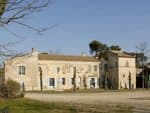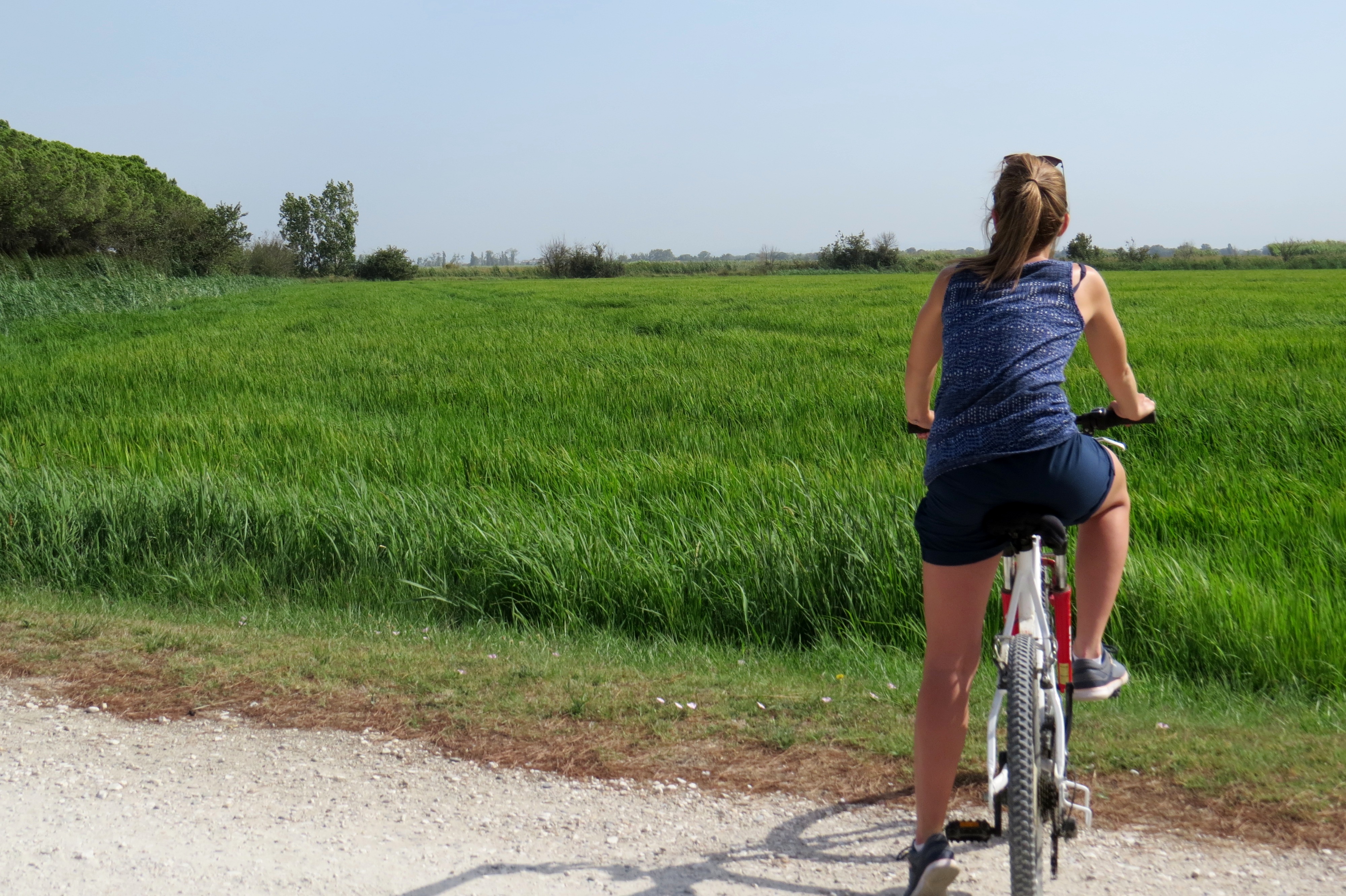
Rice bike ride and Camargue horses
From the village of Sambuc, go for a hike along the Grand Rhone and the lake of Fournelet. This walk takes you through paths and intimate roads Horses, manades but also ornithological observatory and rice paddies will punctuate the route punctuated with small typical farmhouses of Camargue.
6 points of interest

Roselières des marais du Verdier - ©Tour du Valat  Flora
FloraThe Verdier marshes
Verdier Marshes consist of four former fishponds totalling 120 ha with diversified habitats (reed beds, scirpiies, tamarisk groves). The site was set up for a herd of Camargue cows which ensures pasture pressure in the pond and keeps the marshes open. The Verdier Marshes are attractive to waterbirds, giving them a real ornithological interest. In free access, the site has an observation platform.

Réserve naturelle régionale de la Tour du Valat - ©Opus Species - PNR Camargue  Flora
FloraThe Tour du Valat Regional Nature Reserve
Created in 1954 by Luc Hoffmann, the Tour du Valat is a research center specializing in the conservation of Mediterranean wetlands. Initially oriented towards ornithology, the research then extended to all the fauna and flora of the Mediterranean wetlands. The estate is classified as a Regional Nature Reserve and covers 1845 ha. There are natural habitats characteristic of the Camargue, more than 600 species of plants and more than 300 birds.
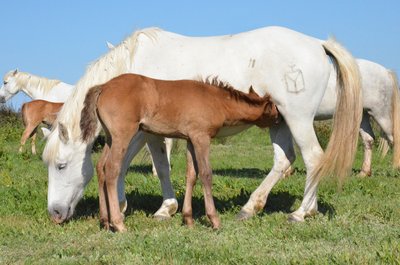
Cheval de Camargue et son poulain - ©Marjorie Mercier - PNR Camargue  Elevage et pastoralisme
Elevage et pastoralismeThe Camargue Horse
The Camargue horse is a very old breed (1978) and would descend from the prehistoric horse of Solutré. Symbol of the Camargue, with a gray-white dress, short ears and a shaggy mane, it is small, about 1.45 m at the withers. His dark hair of birth takes its final colour white-gray when he is around 4 years old. Raised in the Camargue, he is the companion of the guardian and the working tool for raising bulls. Breeding and reproduction criteria are strict to preserve his breed.
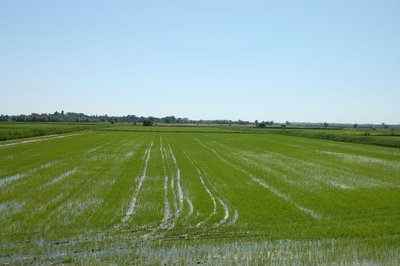
Rizière - ©Muriel Cervilla - PNR Camargue  Produits du terroir
Produits du terroirRice fields
Rice farming has been present in the Camargue since the post-war period. Complex, this culture follows several stages: lifting, tillering, bolting, return and flowering. The land is flooded to promote the germination of rice grains and prevent the proliferation of fungi. Rice farming therefore requires freshwater irrigation and extensive drainage to develop the saltiest land. Huge amounts of water between the two arms of the Rhône (400 million m3 per year) are needed.
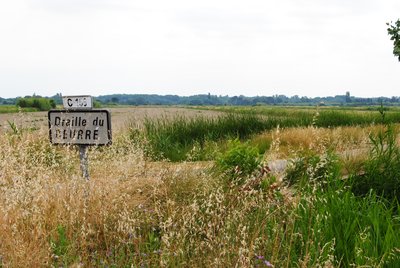
Sur le chemin de la draille du Beurre - ©Chloé Scannapiéco - PNR Camargue  Patrimony and history
Patrimony and historyButter's draille
Two assumptions are used to explain the origin of the name of this draille. Literally "drinking path", it would be at the time, the original access path that cattle borrowed to drink in the Rhone. It would also remind the presence of islands, formed by the Rhone, conceded to owners who agreed to pass travelers in exchange for a little butter. The peasants paid their taxes to the Arles consuls with goods and food.
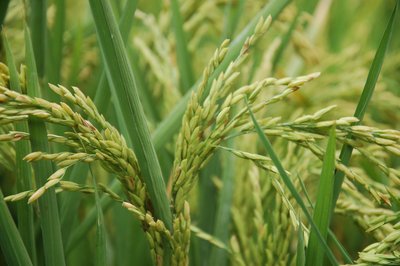
Epis de riz - ©Marjorie Mercier - PNR Camargue  Produits du terroir
Produits du terroirIGP rice from Camargue
Sown at the end of April, the rice comes out of the water in May and is harvested between September and October. Production is now adapting to new consumption and is abandoning the cultivation of round rice for long and fine rice, which is more appreciated. They also grow red rice with a naturally colored caryopsis (fruit) and wild rice. In 2000, the Camargue rice obtained a sign of European quality, the Protected Geographical Indication (PGI), recognition of the know-how of the producers.
Description
At the exit of the Sambuc village, heading south, take the bike path along the D36.
1 - Turn right on the C136 from Fiélouse to Sambuc. Continue for 6 km. Leave on the left the Jacques Bon manade and the path that leads to the Tour du Valat.
2 - . At the crossroads of Mas de Fiélouse, turn left. Walk along the lake of Fournelet and Salin de Badon (on the edge of the Camargue National Nature Reserve).
3 - Go left towards Salin-de-Giraud (bike marking). Pass Mas Saint-Bertrand and leave Mas Lou Verdau on the left Continue and turn left on the C139 Petit and Grand Badon then continue for about 4.5 km.
4 - At the intersection of the D36, turn left Go past the Peaudure hamlet and take a right on the pine tree lane for 500 m. Head to the right to reach the C156 "Draille du Beurre". Follow this path for 3 km. Pass in front of an old mill.
5 - At the crossing, turn left to join the village of Sambuc. Continue for 4.5 km.
6 - Turn left, towards the center of the village. Continue for 1 km. At the junction with the Abrivado road (D36), turn right onto the car park.
- Departure : Route of Abrivado car park, Le Sambuc
- Arrival : Le Sambuc
- Towns crossed : Arles and Saintes-Maries-de-la-Mer
Forecast
Altimetric profile
Recommandations
Stay alert on the D36, dangerous and busy road!
Respect the rules of the road on roads open to public traffic.
The Tour du Valat is not accessible to the general public, any exceptional opening is announced in advance on the website of the Tour du Valat.
Ornithological observatory of the Grenouillet located on the path of Fiélouse, possibility to stop to admire the scenery and the wildlife at 2 m height from the ground.
Information desks
Domaine de La Palissade
BP 5, 13129 Salin-de-Giraud
the Camargue museum
Mas du pont de rousty, 13200 Arles
Remember to visit the Camargue museum! It is located next to the administrative centre of the Camargue Nature Park.
OT Arles
9 Boulevard des Lices, 13200 Arles
Transport
Envia transport network : Agglo 10 > Arles/Salin-de-Giraud by the Sambuc >> www.tout-envia.com; www.pacamobilite.fr
Access and parking
24 km south-east of Arles, by the D570 and the D36.
Parking :
Access
- Emergency number :
- 114
Report a problem or an error
If you have found an error on this page or if you have noticed any problems during your hike, please report them to us here:

